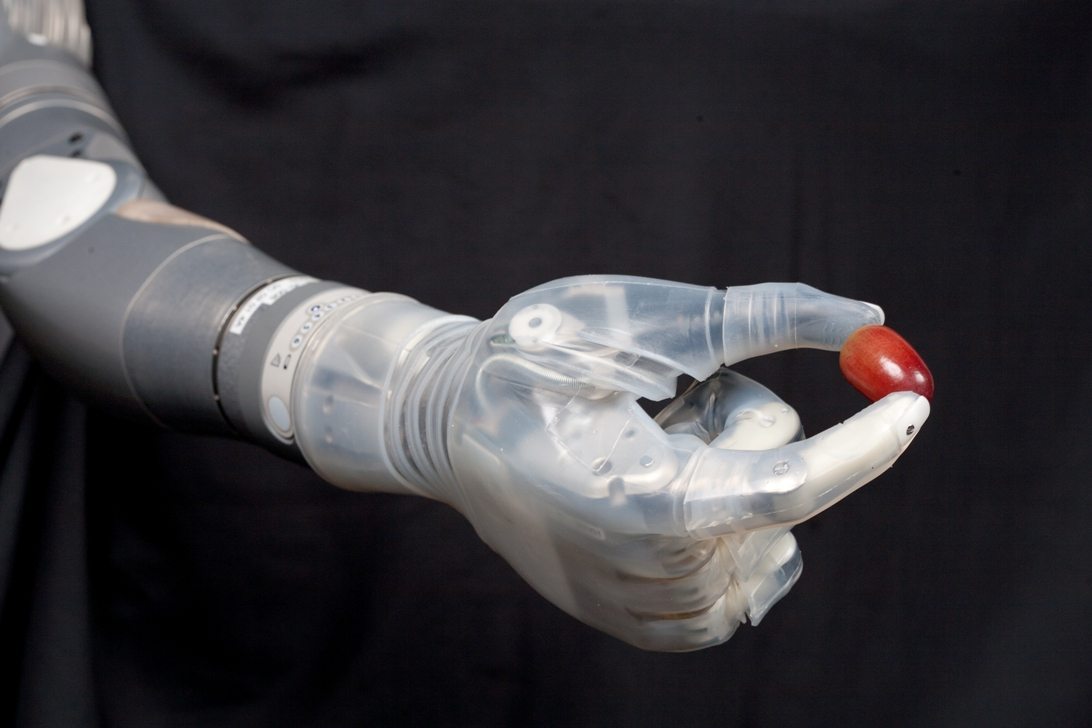
First Commercial Mind-controlled Arm Approved by FDA
Prosthetics have a long history. Possibly the earliest prosthetic limb is an artificial leg, which dates back to around 300 B.C. and was discovered in Capua, Italy. The limb was cast in bronze and iron with a wooden core, and it is believed it was meant more to make the wearer feel whole, rather than for any functional use. Since then, prosthetics have certainly come a long way. These days, developers realize that amputees have a wide range of varying needs and there is no one-size-fits-all, solution to prosthetic limbs. With this in mind, today’s most sophisticated artificial limbs have the ultimate in functionality due to their capability to interact directly with the brain.
Last month, the FDA approved the first commercially available brain-controlled prosthetic arm. Developed by engineers at DEKA, Integrated Solutions in Manchester, New Hampshire, the arm, dubbed Luke (after Star Wars’ Luke Skywalker), took eight years to develop, but according to users, it has been worth the wait. What makes the DEKA Arm System so different is the fact that it combines a number of approaches previously used separately in prosthetics. One of the most innovative is the use of myoelectricity.
What is Myoelectricity?
Myoelectic signals are the type of electrical impulses that produce contraction of muscle fibers in the human body to control voluntary movements. Developers of prosthetic devices have been interested in myoelectricity for some time because by using small movement—such as the blink of an eye—it is possible to facilitate operation of a computer, which can then be used to move and artificial limb.
The DEKA arm is powered by batteries and is able to detect movement in certain muscle groups, which are attached by means of electrodes. The arm converts these movements to motor control allowing the user to control the arm smoothly and more intuitively. What’s even more impressive about DEKA is that it can be configured to operate via wireless sensors embedded in the soles of the user’s shoes. The arm may also be adapted to interface with the wearer using a technique known as targeted muscle reinnervation (TMR).
What is TMR?
Each time we make a voluntary movement, the brain sends electrical commands along the spinal cord, through the peripheral nervous system and out to the muscles. It you have had a limb amputated, the peripheral nerves will still carry electrical signals but they will finally culminate in a dead-end at the amputated limb.
Targeted muscle reinnervation is a process in which the nerves from an amputee’s spare muscle (target muscle) are deactivated; the muscle is then reinnervated with nerves taken from the amputated limb. As a result, signals produced by the targeted muscle can be used to send motor commands to a prosthetic limb, and all it takes is for the user to think “I’m going to move my arm,” and the nerves fire and the prosthetic arm will move accordingly.
Funded by DARPA, the device is the first prosthetic arm with the ability to perform several movements simultaneously. It is also exceptionally agile and can control several joints at a time, enabling it to pick up small objects, such as a jelly bean. This is because of its electromyogram electrodes, which are able to pick up electrical signals from muscles near to where the prosthetic device is attached. The arm is roughly the same size and weight as a natural arm and can perform six different grips. The built-in computer lets it know which movement the user wants to make.
The bionic arm is also very versatile. It can be configured for people who have lost an upper limb at the lower arm, upper arm or shoulder joint, although it is not suitable for someone whose arm has been amputated at the wrist or elbow. This prosthetic device is a great addition to the increasing range of “intelligent” prosthetics. By December 2013, there were more than 1,500 Americans living with the loss of a limb as a result of combat in Iraq or Afghanistan. Many of them have no option other than to wear an artificial limb bearing only a manual hook which is outdated and impractical.
The DEKA device was originally designed to facilitate veterans who have lost an upper limb in battle. It allows users a much freer range of functions, enabling them to manage day-to-day tasks, such as preparing meals, opening locks, dressing and combing hair. Now that it has been FDA approved, the arm can be legally marketed and sold throughout the United States.
Image credit: DEKA Research







